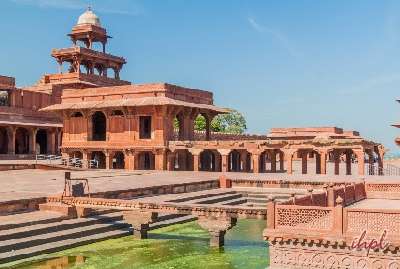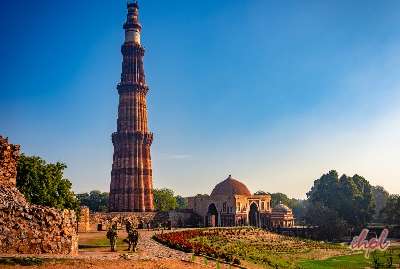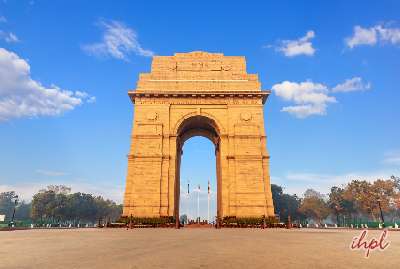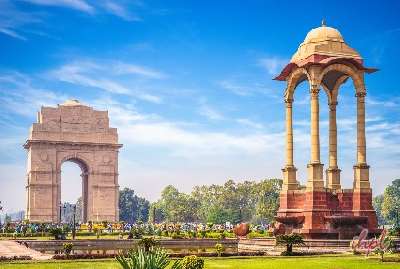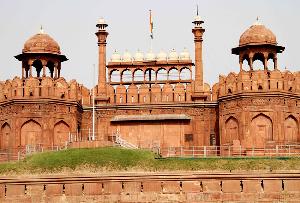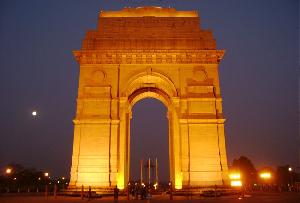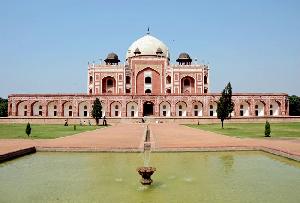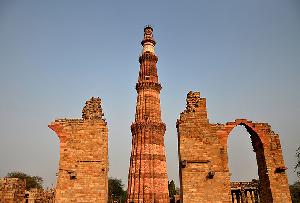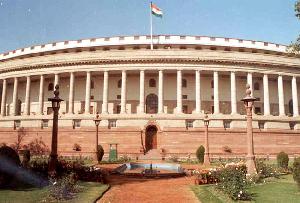Ghaziuddin Khan’s Madarsa and Tomb was built in the year 1692 by a courtier of Aurangzeb called Mir Shahabuddin. The title Ghaziuddin was conferred on him.
Ghaziuddin Khan’s Madarsa introduced English education in the year 1824, and was called the Anglo Arabic School. Later on it came to be known as the Anglo Arabic College.
The Ghaziuddin Khan’s Madarsa and Tomb in Delhi was an attempt to emancipate and enlighten the Muslim community and so this Madrasa added to the progress of this community.
The building is an excellent example of Madrasa architecture with its arcaded apartments, arched gateways and the typical features of Islamic architecture. On the western side of the Madrasa lies a mosque which is topped by domes and flanked by the lofty minarets. On the northern and southern sides of the mosque there are certain enclosures which contain the graves. One of the graves is of Ghaziuddin Khan, the founder of this Madrasa and Tomb.
History has left its traces in the walls and gateways of the Ghaziuddin Khan’s Madarsa and Tomb which was one of the striking attempts of emancipation and advancement of the Muslim community.
History:
History of Ghaziuddin Khan’s Madarsa and Tomb is quite interesting. Built during the reign of Aurangzeb, it was one of the few earliest attempts for the emancipation of Islam community in medieval India.
Ghaziuddin Khan was a title that was conferred upon Mir Shahabuddin, a courtier in Aurangzeb’s court. He was the first person who had set up this madrasa for educating the Islam community. In 1894, English education was introduced in the madrasa and it came to be known as Anglo Arabic School which later on became the Anglo Arabic College.
The word madrasa meant study and later on the extended version of the word came to be known as place of study. Located near the Ajmeri Gate this place stands as a witness to the emancipation and enlightenment of Mughal India.
The beautiful architecture of the Madrasa reflects the features of Islamic architecture. There are arcaded apartments, arched gateways and domed structures. On the northern and southern sides there are enclosures which contain the tombs. Ghaziuddin’s tomb is located in this area.
Fast – Facts:
Fast Facts about Ghaziuddin Khan’s Madrasa and Tomb
Location:
It is located near the Ajmeri Gate.
How to Reach:
Tourists can take auto rickshaws, taxis, buses or the Metro Rail.
Preferred Timings: It remains open on all days.
Sunrise to sunset
Charges for Photography: Nil
Nearest Shopping Venues:
- Chandni Chowk
- Chor Bazaar
- Chatta Chowk
Nearest Metro Station: Kashmiri Gate
Nearest Airport: Indira Gandhi International Airport
Nearest Railway Station: Old Delhi Railway Station
Nearby Attractions:
Ghaziuddin Khan’s Madarsa and Tomb located near the Ajmeri Gate was constructed by Mir Shamsuddin in 1692. The title Ghaziuddin was conferred upon Mir Shamsuddin who had created this Madrasa to educate and enlighten the Islamic community of medieval India.
English was introduced in this school 1892 and from then it came to be known as the Anglo Arabic School and later on the Anglo Arabic College. The Madrasa also contains the tomb of Ghaziuddin.
Tourist Places near Ghaziuddin Khan’s Madarsa and Tomb:
Jama Masjid:
The Jama Masjid is one of the largest and principal mosques of India which is visited by people from world over.
Chandni Chowk:
One of the biggest trading centers of Delhi, Chandni Chowk or the Moonlight Square is known for its exquisite handicrafts, beautiful jewellery, exotic food and its old world charm.
Red Fort:
This sandstone citadel of Delhi, the Red Fort or the Lal Qila on the western banks of Yamuna, is Shah Jahan’s majestic creation. The massive fort with pavilions and palatial mansions draws tourists from world over.
Rajghat:
This is the place where Mahatma Gandhi was cremated. On the banks of Yamuna, the Rajghat is the perfect serene locale to take a stroll and recollect the unforgettable contribution of this great leader.
Ajmeri Gate:
One of the oldest gates of Delhi, the Ajmeri Gate used to be a gateway of Shahjahanabad. The gate with its arched openings still reminds us of the Mughal rule in India.
Kashmeri Gate:
During Sepoy Mutiny, the Kashmiri Gate was the place where the English and Indian troops fought a valiant war.
Dara Shikoh Library:
This was built by Shah Jahan’s son and later used as the residential place for David Octerlony who was the first British Resident of Delhi.
St James Church:
Consecrated in the year 1836, this church is quite similar to the St. Paul’s Cathedral in London.
Lothian Cemetery:
The first cemetery in Delhi which was built for the European soldiers who lost their lives in the 1857 Sepoy Mutiny.
Salimgarh Fort:
Built by Salim Shah who was Sher Shah’s son, the Salimgarh Fort was used as a artillery unit by the British during the 1857 revolt.



